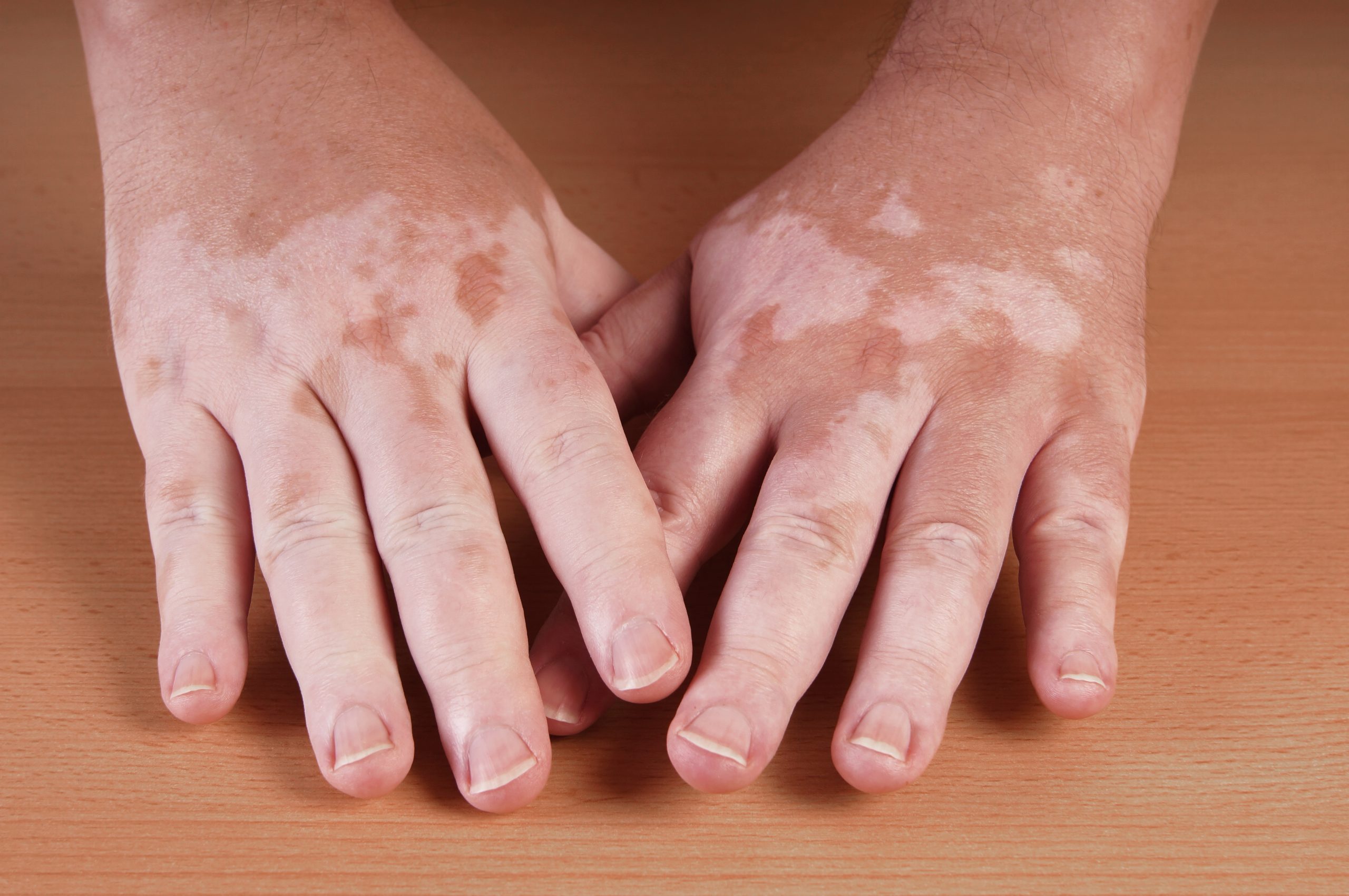
When cells that make pigment (color) in the skin are destroyed, it causes vitiligo. Vitiligo, also known as leukoderma, is a skin disorder in which white spots or patches appear on the skin. It is caused due to the weakening or destruction of the cells called melanocytes.
World Vitiligo Day is celebrated on 25th of June every year to spread awareness about this skin disorder, its causes and treatment. When cells that make pigment (color) in the skin are destroyed, it causes vitiligo. Vitiligo, also known as leukoderma, is a skin disorder in which white spots or patches appear on the skin. It is caused due to the weakening or destruction of the cells called melanocytes. Melanocytes produce a pigment called melanin. Loss of this pigment causes discoloration of the skin.
The true cause of vitiligo is still not known but it is said to be an autoimmune disease. It might occur when the immune system mistakenly attacks some part of your body. The skin then starts to get discolored with white patches replacing the natural skin color. Only the color of the skin gets affected, the texture and the quality remains the same. This skin condition cannot be reversed by medication and millions of people are affected by it worldwide. It is most likely to occur on the areas exposed to the sun. In many people it was observed to have occurred due to extreme stress such as an accident, sudden loss of a near and dear one, or severe sunburn. This condition is a common skin disorder; however, there may be some unknown facts to it.

True cause of vitiligo is still not known but it is said to be an autoimmune disease
Following are the things that you might not know about vitiligo:
1. Vitiligo is painless
Vitiligo is a condition which does not lead to any kind of physical pain in the person suffering from it. It affects the skin color, hair and sometimes the pupils which might cause some emotional and psychological trauma. People might suffer from depression due to their changing appearance and might need therapy to deal with the stress this condition brings with it.

People might suffer from depression because of the change in appearance
2. Vitiligo is neutral to all
Vitiligo can happen to anyone; people of any race, color, sex or age, however, it is most likely to happen to people with certain immune system diseases. Vitiligo is not life-threatening and most people with vitiligo stay in a good health. Children might or might not get it if one of their parents suffers from vitiligo. Hence, vitiligo is a neutral skin condition which can affect anyone without a family medical history of the same.
3. Vitiligo is not contagious
It is a disorder which replaces the natural skin tone with white spots and patches. It is not contagious, that is, vitiligo cannot be spread from one person to another by direct or indirect contact. It is not transferable by touch, sharing personal items, sexual intercourse etc
4. Vitiligo is not caused by food intake
Some people believe that vitiligo can occur because of consuming white or citrus food items. However, there is no scientific evidence to prove the above myths. Vitiligo is not caused by the consumption of any food item; it is said to be an autoimmune skin condition. Patients suffering from it can eat and drink any food item unless their doctor tells them otherwise.
5. Not all white patches lead to vitiligo
Vitiligo is an exclusive skin disorder which is caused due to the loss of a pigment called melanin. Not all white spots or patches on the skin can be deemed as vitiligo. It is important to consult a doctor in case a white spot appears on the skin instead of self-diagnosis. There are several other conditions and diseases which begin from a white spot and are not vitiligo, these might be Nevus, post-burn skin, leprosy, fungal infections etc.




